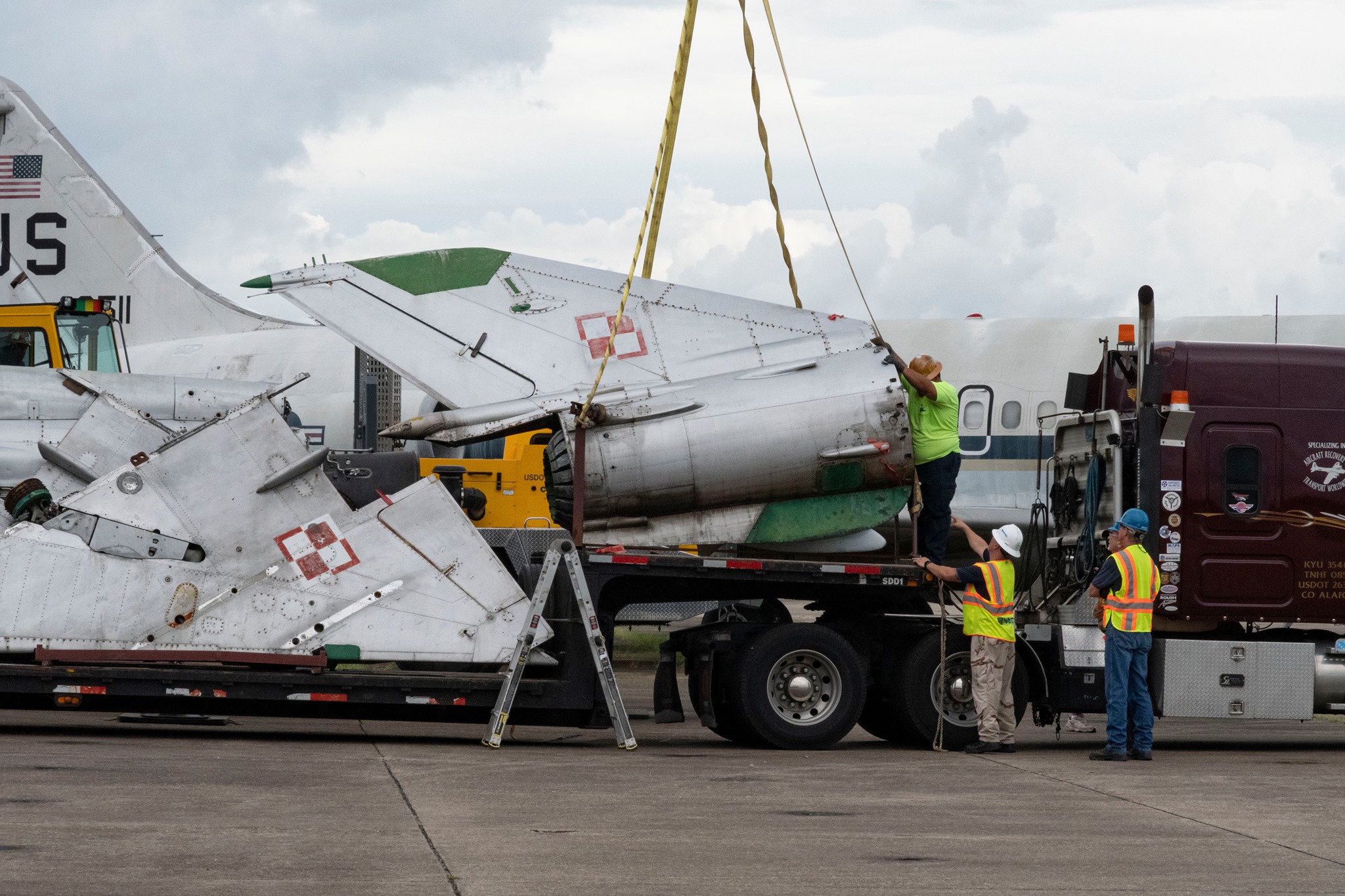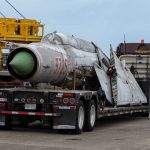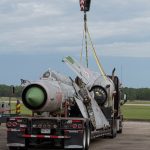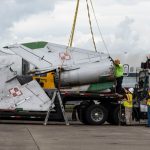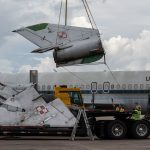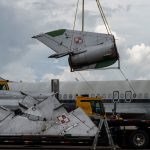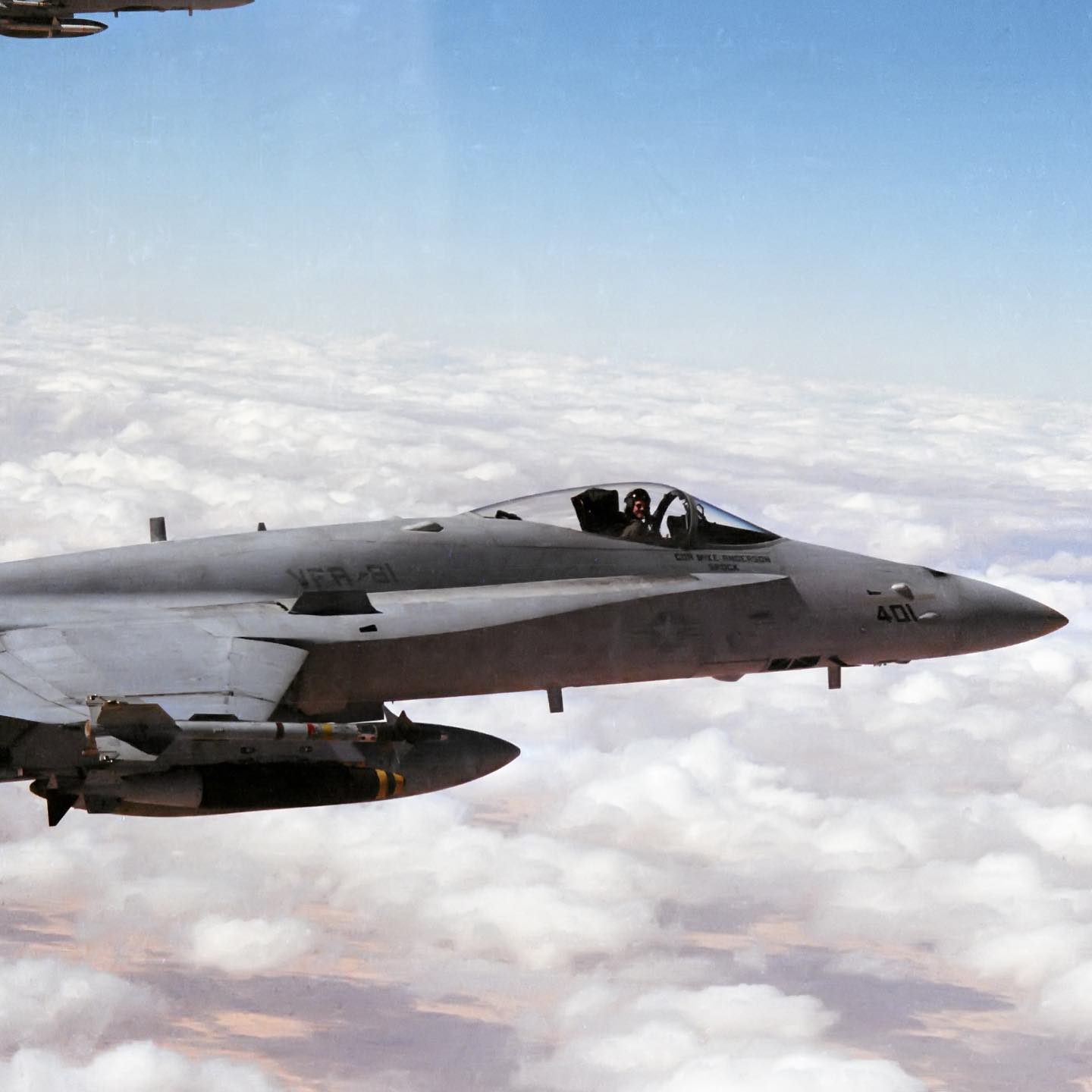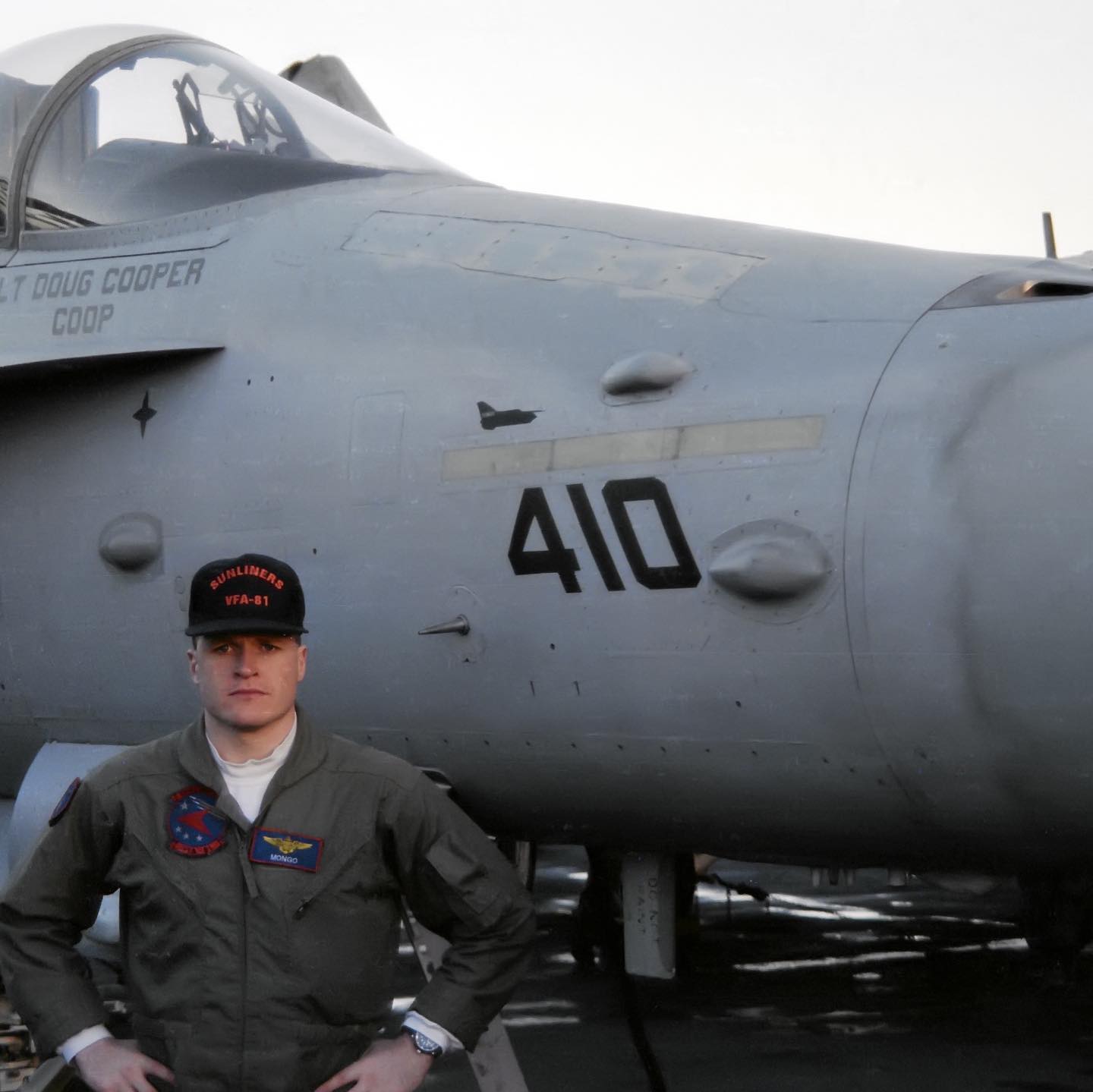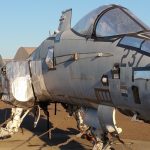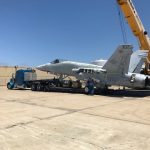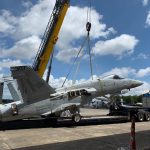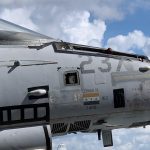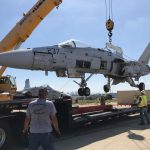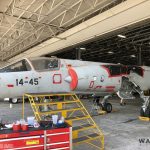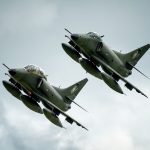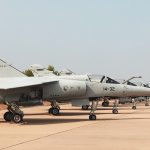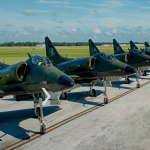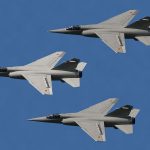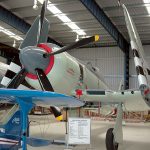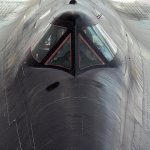That National Naval Aviation Museum in Pensacola, Florida has just taken delivery of a former Polish Air Force MiG-21bis ‘Fishbed’. It will be refurbished in Iraqi markings for a Gulf War display which will include the two MiG-killing F/A-18Cs from Operation Desert Storm.
The MiG-21, Board Number 9735, last flew with 41. Pułk Lotnictwa Myśliwskiego (41st Fighter Regiment) from Malbork, Poland. The squadron began retiring their MiG-21s in 2001, reforming with former East German MiG-29 ‘Fulcrums’ as 41.ELT (Eskadra Lotnictwa Taktycznego/Tactical Squadron). The Fishbed made her last flight on December 19th, 2003, going into storage at Krosno. She was part of a batch of 25 former Polish Air Force MiG-21s that the air defense contractor Draken International of Lakeland, Florida acquired in July, 2012.
Draken International recently donated 9735 to the Naval Aviation Museum Foundation, which will restore the former Polish fighter as an Iraqi Air Force example. She will represent one of a pair of Chinese-built MiG-21s that tangled fatally with U.S. Navy Hornets from the carrier USS Saratoga (CV 60) on January 17th, 1991 at the beginning of Operation Desert Storm. Joining the MiG in the new display at Pensacola will be the actual pair of Hornets (F/A-18Cs Bu.163502 and Bu.163508) which downed the Iraqi fighters that day at the hands of Lt Nicholas “Mongo” Mongillo and Cdr Mark “MRT” Fox from VFA-81 Sunliners. These kills proved to be the only air-to-air victories for the U.S. Navy during the first Gulf War.
The two MiG-killer Hornets arrived at Pensacola during June. On the historic day they engaged the Iraqi MiG-21s, Lt Mongillo was flying F/A-18C ‘502 (then coded AA 410), while Cdr Fox was in ‘508 (then coded AA 401). The two men were in a flight of four Hornets, each loaded with four 2,000lb Mk.84 bombs. As they approached Al Walid Air Base H-3, their target in western Iraq, the flight received the urgent alert, “400 Bandits on your Nose at 15,” from E-2C Hawkeye #600 (from Saratoga’s VAW-125). A brace of MiG-21s were vectoring towards the bomb-laden Hornets for a head-on attack just fifteen miles away!
As Cdr Fox noted within the book, Gulf War Air Debrief, “It all happened very quickly. I switched back to air-to-air and got a lock on one of them. I had the MiG on the right while the second Hornet in our formation – Lieutenant Mongillo – took the MiG on the left. The other two Hornets [flown by VFA-81’s Executive Officer CDR Bill “Maggot” McKee and VFA-83’s OpsO LT CDR Chuck “Bouncer” Osborne] had also acquired radar locks.”
“The MiGs approached us, nose on, supersonic at Mach 1.2. Our relative rate of closure was more than 1,200 knots. They weren’t maneuvering. I shot a Sidewinder first. It was a smokeless missile and I thought, at first, that I had wasted it because I couldn’t see it tracking toward the MiG. I fired a Sparrow. The Sidewinder hit, though, followed by the Sparrow. The first missile actually did the job, and the Sparrow flew into the fireball. The whole event, from the E-2’s call to missile impact, took less than 40 seconds.”
Meanwhile, Lt Mongillo locked-on to the trailing target at about 8 miles out, identifying it positively at 4.5 nautical miles and fired an AIM-7 Sidewinder at it moments later, which successfully destroyed the enemy aircraft. While the flight of Hornets did receive information on further contacts at 20 nautical miles out, they continued with their primary mission, to bomb the Al Walid Air Base, which they accomplished before returning back to the Saratoga.
As noted earlier, both of the two MiG-killing Hornets are now at Pensacola and are being prepared for refurbishment and display. Given that January 17th, 2021 will mark the 30th anniversary of their actions in Desert Storm, it seems likely that this will be the target date for their completion!







